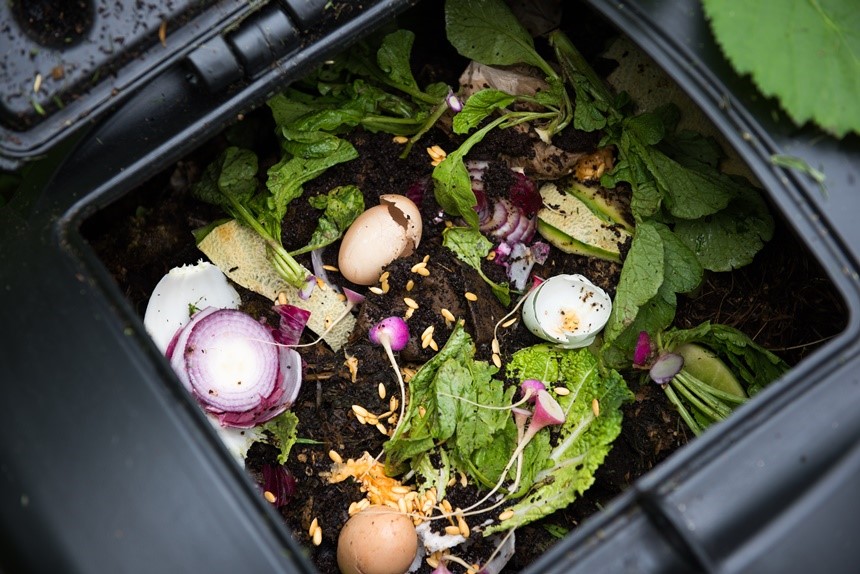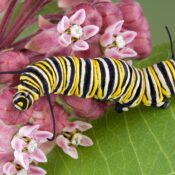Transforming kitchen and yard waste into rich topsoil involves a lot of science. Luckily, microbes handle all the chemistry and biology behind composting. We just have to feed them.
There are many reasons to compost kitchen waste in our backyard: it saves landfill space, is good for the planet, and increasingly, is required by law. Selfishness is what inspires me: The black gold that comes out of the compost bin is a boost to my veggie garden, and that’s no small thing in light of today’s soaring food costs. Topsoil is pricey, and quality often suspect – why pay when you can make it for free?
Although urban centers like New York, Denver and Austin have city-wide composting programs, fewer than two percent of Americans have access to curbside “green bin” collection. The rest of us are on our own. The jargon-dense and often contradictory advice found online can make it seem like composting is hard to do. The truth is, any heap of organic matter exposed to air and moisture will break down into productive soil without us. Our role is to help ensure it doesn’t smell bad or attract vermin.
No matter where you live in the U.S., you can have brilliant success making compost with little effort or fuss. The thing to bear in mind, though, is that while the basics hold true across all regions, details vary quite a bit depending on your climate.
Where I’m from in northern New York State, compost bins are ice cubes from November through mid-April. Compared to Long Island, NY, it takes me twice as long to make compost, and requires twice the bin volume. Farther south, the contrast becomes even more acute. This is why it’s dicey to use the Internet for compost guidance, which should be tailored to locale. If you googled what to wear outdoors in March, a lot of the results wouldn’t serve you well.
Fortunately, there are allies in your community who want to help. Every state has a network of Extension offices, usually one per county. Your local Extension office can give specific advice on how to compost in your area. They probably offer in-person workshops a few times a year on composting, and may even have compost bins available. It’s one of the few agencies where you can still talk to a live person, either an Extension educator or a Master Gardener Volunteer.
Here are some tips you can trust in any climate.
- You don’t need products to “inoculate” or “activate” your compost. More than enough microbes will be on the leaves and kitchen scraps you add to the mix. And unless you plan to compost disease-laden fecal matter (please don’t), there’s no need to shell out $50-250 for a special thermometer.
- To be happy, compost needs a blend of high-carbon organic matter such as dry leaves and shredded newsprint, and lesser amounts of things like grass clippings and kitchen waste that are nitrogen-rich. While a carbon-to-nitrogen (C:N) ratio of 30:1 gives faster results, composting is not a race. It’s good to know in general which materials are very high in one direction or the other. The take-away for beginners is that while extra carbon might slow the process a bit, excess nitrogen will bring bad smells, hungry rats, and grumpy neighbors. Always err on the side of carbon.
- Compost also wants to breathe. Air should be able to get in on all sides of a compost bin. High-carbon materials like wood chips, fiber egg cartons, corrugated brown cardboard, and small twigs can help aerate the pile as well as raise the carbon fraction.
- Usually, enough moisture is present in the mix to keep the microbes humming along. In arid environments, feel the compost every few weeks to see that it is damp. Water sparingly, as too much moisture leads to odor problems.
- In a compost bin, small items behave better than large ones. Potato peels break down well, but 10 pounds of whole potatoes will stink unless you dump a truckload of wood chips on them.
- Along with contented compost, we want frustrated furry friends. Excluding meat and dairy products from the bin will help. Rats and raccoons pose the greatest risk, but skunks, squirrels, bears, and stray dogs are no picnic to find in your yard either. All commercial bins claim to be animal-resistant, though efficacy varies.
- According to experts, the ideal bin size is between 10 and 200 gallons (202 gallons is one cubic yard), depending on your family size. This allows compost to heat up, hastening the process, while still getting enough air. For one or two people, a smaller bin may be more than adequate. Small batches may not generate heat, but the compost still breaks down.
- Periodic turning aerates the pile and often triggers a heat-up phase, thus maturing the compost faster. But as I’ve said, it’s not a race. It’s up to you how much time you want or are able to put into compost-making. It shouldn’t be stressful, or you’ll end up resenting it.
- Where compost freezes solid in winter, it can take two-plus years for compost to mature. In the South, compost may be ready in a few months if it’s been turned. Mature compost looks and smells like rich soil. I hope you can cash in on some black gold this year.
Paul Hetzler is a former Cornell Extension educator.
Become a Saturday Evening Post member and enjoy unlimited access. Subscribe now



